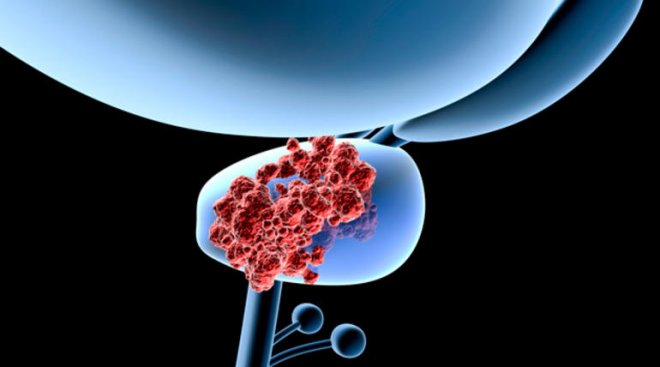
Prostate Biopsy
Effective diagnosis and diagnosis of prostate cancer is an extremely important issue. Unlike radiological methods, in men prostate biopsy Suspicious areas are scanned with. It can be performed quite practically under ultrasound. New generation techniques in the field provide highly effective results in the diagnosis of aggressive cancer cells.
A suspicious situation may be seen as a result of a rectal examination performed by a physician specialized in the field of urology. If the PSA rate in the blood test is not within the ideal range, your doctor will request a biopsy. A piece of the prostate gland is taken with the help of a special tip needle. It is then examined pathologically in a laboratory environment.

What is Prostate Biopsy?
Today, the diagnosis of prostate cancer is made by prostate biopsy. Prostate tissue taken by biopsy is examined by a pathologist under a microscope after being treated with special dyes. After the examinations, the pathologist reports the situation to the urologist. Definitive diagnosis of prostate cancer prostate biopsy It is placed with .
Among the factors that require the physician to resort to prostate biopsy: If the PSA values are high according to the patient's age, if abnormal tissues are detected in the rectal examination, or if an area suspicious for cancer is detected in the prostate in the MRI scans, prostate biopsy is performed.
Why is a prostate biopsy required?
It is a technique that has come to the fore in recent years with its effective results in cancer diagnosis. Classical biopsy and biopsy in the diagnosis of prostate cancer fusion prostate biopsy is applied. Classical biopsy is performed using the transrectal ultrasound technique. Along with the areas suspected of having cancer, other areas are also displayed. An MRI device is not used on the person before the application.
A biopsy is requested in patients at risk of prostate cancer. It is performed to understand whether there is an abnormal condition in the tissues in the area in question. A biopsy is performed by a urologist who is competent in his field. Afterwards, the taken piece is examined in detail.
The new generation biopsy process is assisted by the MR imaging system. Suspicious points in the prostate tissue are determined. Secondly, the application is carried out with ultrasound placed in the person's anal area under anesthesia. It provides an advantage to patients because it uses MRI and ultrasound images together.

What are the Prostate Biopsy Types?
Patients must have a prostate MRI before prostate biopsy. Prostate biopsy is performed for suspicious areas detected on MRI. prostate biopsy; It consists of the classical prostate biopsy, known as the old type, and the fusion prostate biopsy, known as the new type.
Classic Prostate Biopsy: Classical prostate biopsy is performed in many hospitals. In the classical prostate biopsy technique, only transrectal ultrasonography is used. The patient does not undergo an MRI examination before prostate biopsy. The urologist performs an examination by placing an ultrasound probe on the patient's anus. This ultrasound device cannot see areas within the prostate that are suspicious for cancer; It only shows the front and back of the prostate and the shell part of the prostate. When performing a classic prostate biopsy, the urologist takes samples from various parts of the prostate and examines them.
Fusion Prostate Biopsy: Before performing fusion prostate biopsy, patients undergo multiparametric prostate MRI. Areas suspicious for prostate cancer are determined from MRI images. These areas are marked on MRI images. For the biopsy procedure, the patient is anesthetized and an ultrasound probe is placed in the patient's anus. In new types of ultrasound probe devices, ultrasound images and MR images are overlapped. In this way, areas of prostate cancer that cannot be seen in the old ultrasound are visible in the fusion prostate. Fusion prostate is not taken randomly, but from areas at risk for prostate cancer.

How is Fusion Prostate Biopsy Performed?
Performed by urology specialists fusion prostate biopsy It is performed under sedation so that the patient does not feel any pain and does not move during the procedure. Before prostate biopsy, the patient's MRI must be examined. Suspicious areas are marked on MRI images. The marked areas are loaded into the system of the prostate biopsy device. Prostate biopsy is performed in 2 ways.
1-Transrectal prostate biopsy: Usually the patient is facing left and lying on his side. The knees are pulled towards the abdomen. Transrectal ultrasound is used to guide the needle to the correct spot. The needle quickly enters the prostate gland and removes a tissue sample. An average of 10 – 12 samples are taken from different parts of the prostate. The operation takes approximately 20 minutes.
2- Prostate biopsy via perineum: It is done by lying on your back. The application is performed under general anesthesia. Transrectal ultrasound is often used to guide the needle to the correct spot. The needle is inserted into the prostate gland through a template in the perineum. To collect a tissue sample, the needle is slowly rotated and withdrawn. The biopsy usually takes 30-45 minutes.
Is It Possible to Be Hospitalized After Prostate Biopsy?
Certain points are taken into consideration before the biopsy. It must be precisely diagnosed whether the person has a urinary tract infection or not. It is very important that the patient does not use blood thinners. Finally, prophylactic antibiotic treatments are given against the possibility of inflammation.
After the application, patients are kept under observation. Symptoms such as blood in the urine, burning and pain may be experienced. If the specialist physician deems it necessary, drug treatment can be applied in case of infection. If a suspicious situation is encountered within the first two days after the biopsy, it is recommended to consult a specialist doctor. prostate biopsy For detailed information, you can contact us through communication channels.
Frequently Asked Questions
The biopsy process takes approximately 30 minutes. To reduce the risk of infection, you will be given antibiotics for a few days before and after the biopsy.
It is a biopsy performed to make a definitive diagnosis of prostate cancer. If the urologist sees a suspicion of cancer in the patient after digital rectal examination and PSA test, he definitely resorts to a prostate biopsy.
Prostate biopsy is a tissue removal procedure performed in cases of cancer risk or suspicious appearance, and is used to determine whether there are any anomalies in the tissues in the area.
Our treatments
- Prostate cancer
- Bladder Cancer
- Kidney Cancer
- Kidney stone
- Robotic Surgery
- HOLEP
- ThuLEP
- Prostate Biopsy
- hydrocele
- Varioxel
- Testicular Cancer
- Urinary tract infection
- Urinary Incontinence in Women
- Urodynamics
- Vesicovaginal Fistula
- Laparoscopy Surgery
- Sacral Neuromodulation
- Laser Prostate Surgery
- Penile Prosthesis Implantation
- Prostate Hot Water Steam Treatment
- Penile Shock Wave Therapy – ESWT
- Male Infertility
- Drug Treatment for Sexual Dysfunction (Erectile Dysfunction)


